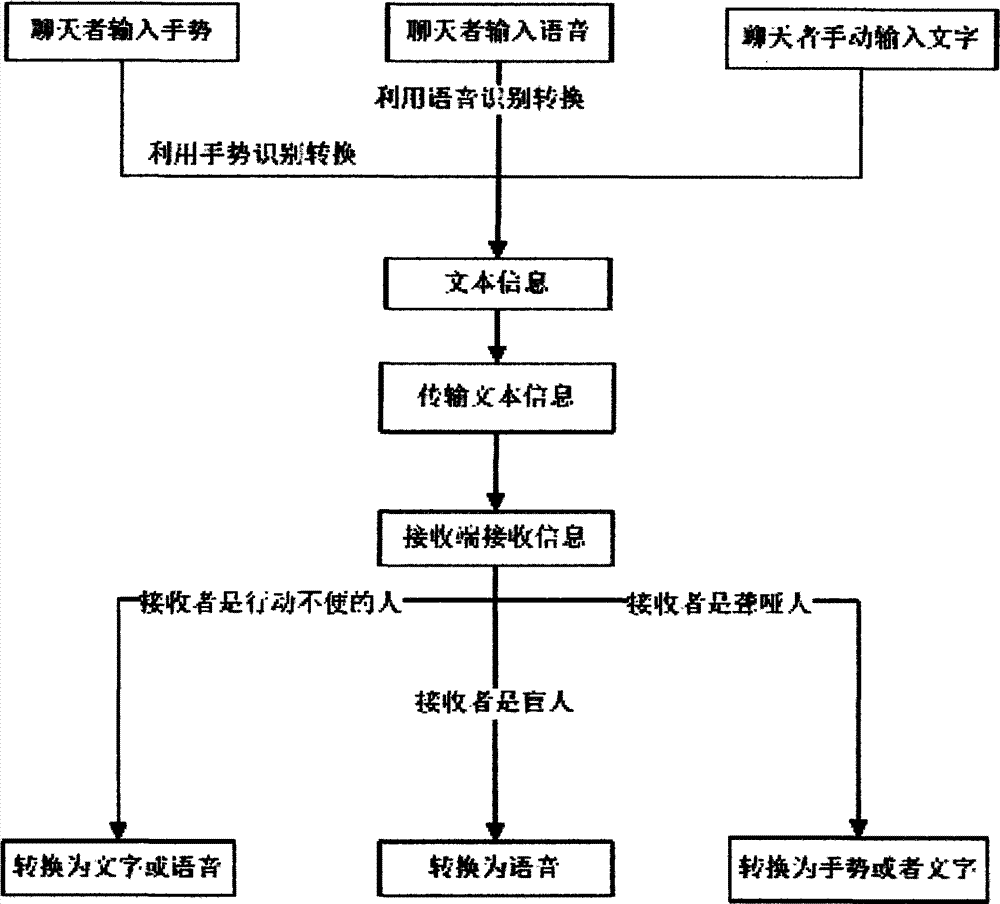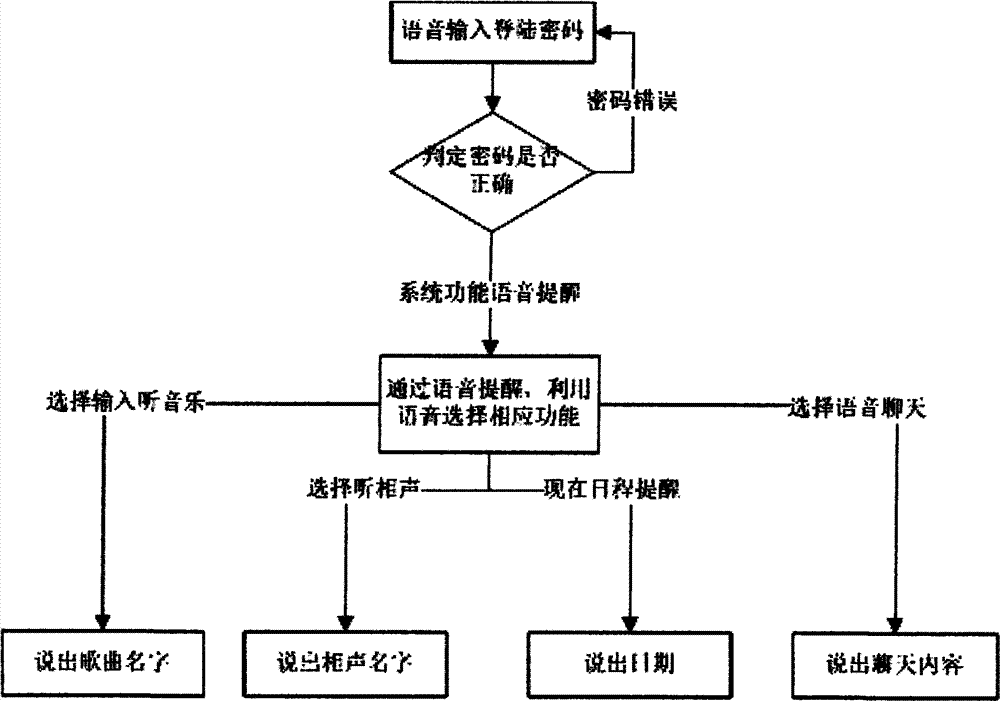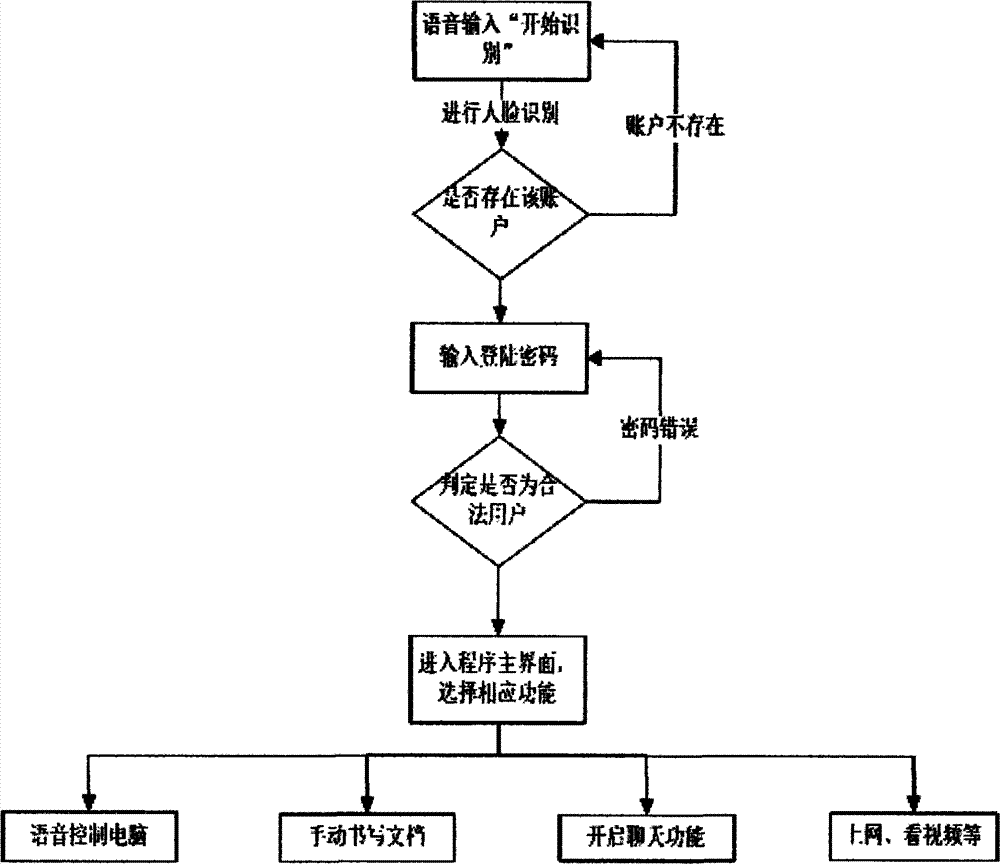Assistive barrier-free communication method based on mode recognition technology
A pattern recognition and barrier-free technology, applied in the direction of data exchange network, digital transmission system, electrical components, etc., can solve the problems of single content of computer software controlled by the disabled and inapplicability of online chat tools, so as to achieve flexible application and solve communication barriers , high versatility
- Summary
- Abstract
- Description
- Claims
- Application Information
AI Technical Summary
Problems solved by technology
Method used
Image
Examples
Embodiment 1
[0020] Such as figure 1 As shown, the barrier-free communication method for the disabled based on pattern recognition technology in this embodiment includes the following steps:
[0021] (1) Login user;
[0022] (2) The chatter opens the chat function and enters the chat content; the deaf-mute can input dumb language and gestures, input text, the blind can input voice, and the handicapped can input voice;
[0023] (3) According to the different input forms, the system automatically realizes the conversion of voice, text and dumb language, and transmits the text information through the network. After the information reaches the local area, it converts text to voice and text to gesture to adapt to the corresponding disabled Habitual way of receiving information;
[0024] (4) For the blind, the text information sent by the other party reaches the local computer and is converted into voice; for the deaf-mute, the text information sent by the other party reaches the local compute...
Embodiment 2
[0027] Such as figure 2 As shown, the barrier-free communication method for the disabled based on pattern recognition technology in this embodiment includes the following steps:
[0028] First, enter the login password by voice, perform voice recognition, and the system determines whether it is a legal user. The system selects corresponding functions through voice reminders, including four functions: listening to music, listening to comic dialogue, schedule reminders, and voice chat. The user voice inputs the function name for enabling the corresponding function, and voice recognition is used to enable the corresponding function. After different functions are turned on, the voice will prompt the system status and possible operations. The user will speak the corresponding voice command or content according to the prompt. After the system performs voice recognition, it will complete the corresponding tasks, including selecting songs, pausing or resuming music playback, and sel...
Embodiment 3
[0030] Such as image 3 As shown, the barrier-free communication method for the disabled based on pattern recognition technology in this embodiment includes the following steps:
[0031] For the deaf-mute, the operation of the system is no different from the operation of the computer by ordinary people. It can be realized by clicking the mouse and inputting the keyboard, and the computer can also be controlled by voice. For people with limited mobility, first voice input "start recognition" for face recognition, and at the same time input the login password, the system determines whether it is a legal user.
[0032] After logging into the system, the following operations can be performed: voice control of computer programs (such as browsing the web, etc.), manual writing of documents, and opening of chat functions. Return to the program interface after completing one of the above operations, and then open other functions.
PUM
 Login to View More
Login to View More Abstract
Description
Claims
Application Information
 Login to View More
Login to View More - R&D
- Intellectual Property
- Life Sciences
- Materials
- Tech Scout
- Unparalleled Data Quality
- Higher Quality Content
- 60% Fewer Hallucinations
Browse by: Latest US Patents, China's latest patents, Technical Efficacy Thesaurus, Application Domain, Technology Topic, Popular Technical Reports.
© 2025 PatSnap. All rights reserved.Legal|Privacy policy|Modern Slavery Act Transparency Statement|Sitemap|About US| Contact US: help@patsnap.com



